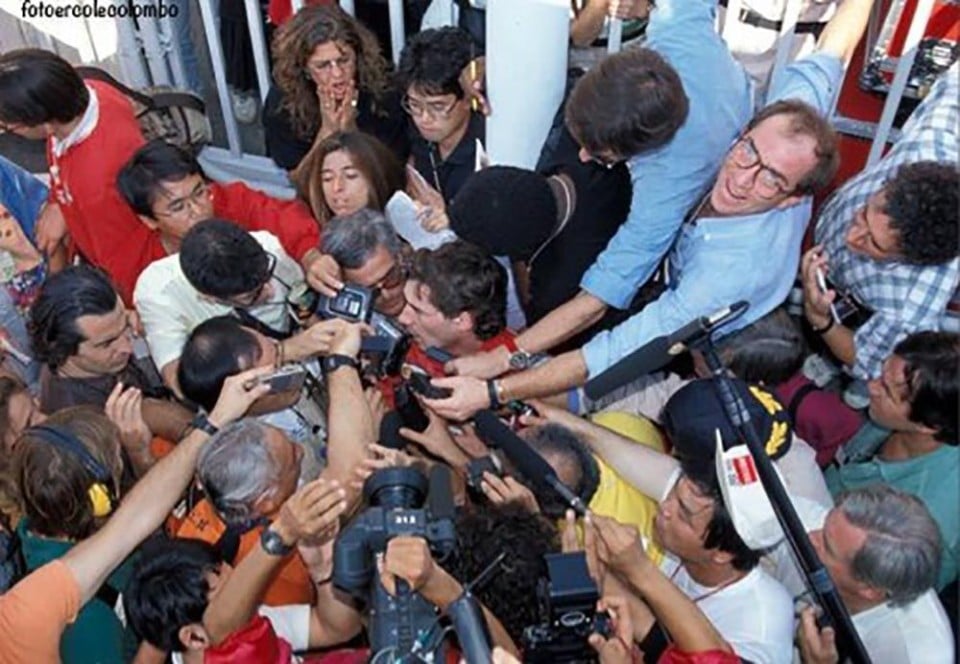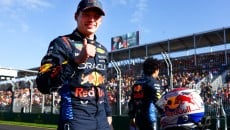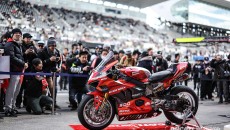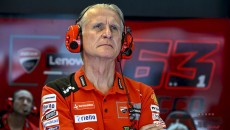Ayrton Senna would have been 60 years old today, and in fact the web is now full of memories of him. Everyone is talking about him, even those observers who at the time followed very few F1 Grand Prix races and who were usually holed up in the Hospitality units or in the press room.
At that time, I was doing all the MotoGP rounds and all the F.1 GPs that didn’t clash, but I was the second journalist of ‘Corriere dello Sport’ for F.1, so while my mentor Renato D'Ulisse wrote the comments, I was galloping around the pits and paddock chasing the drivers.
Then, there weren’t any of the controls that exist today with myriads of press officers, so after the race or in any case when the driver returned to the pits maybe after an accident, you had to do some leg work and get to him, possibly before your colleagues in order to be able to grab a declaration from him.
Sometimes you succeeded, sometimes you didn’t, because a lot depended on the starting position of 'our race', that is, at the point of the pit lane where we were at the time when we had to get moving.
I was much younger, and moreover a marathon runner, so from that point of view I had an advantage but on October 21, 1990 I was hanging around together with Marco de Martino of ‘Il Messaggero’ at Suzuka’s first chicane, the one of the famous accident between Prost and Senna the year before.
We were stationed in the upper chicane, convinced that Senna, who started from pole, would have taken the lead.
We were convinced that Ayrton, who was starting from pole, would arrive in front and we had our eyes fixed on the giant screen ready to enjoy those first incandescent laps.
Seeing Senna in action, a few metres away, but also Alain Prost, was obviously a sight worth seeing and we didn't miss it. At Monte Carlo my favourite place was the Piscine because there the drivers caressed the guard-rails, and by that, I mean I’m not joking.
Ayrton almost touched them, the stuff of two or three millimetres, and at an impressive speed. But even the Suzuka chicane before the downhill straight was a nice place to watch from, and with what had happened the year before, the spectacle was guaranteed, but Senna and Prost never even made it to the chicane.
The collision was inevitable and while the dust was still settling, Marco and I were already running.
We saw the accident on the giant screen: Alain incredibly got away from the start just an inch better, Ayrton was on the inside, pedal to the metal, and it was immediately evident that neither of them would ever have lifted his foot from the gas.
The collision was inevitable and when the dust was still settling in the gravel trap Marco and I were already running. Legs pounding away, downhill. In the meantime, the images were of Senna calmly walking up towards the pits. As we couldn’t cross the track, we arrived almost at the end of the straight, and then, always running hard, we went into the back of the pits which at that time was divided from the paddock by a grating. Below were prefab buildings in which the teams had set up their offices.
When we arrived, Senna was already surrounded by journalists: we had to hang on a railing
From a distance we saw our colleagues, also running, coming out of the press room to reach Ayrton who was calm, and did not seem to be in any hurry to report to the box what had happened. In short, he was there waiting for us.
There was already a small crowd around him when we arrived. Suzuka 1990 was therefore one of those times that we did not manage to conquer our own personal pole position, but to miss Senna's words was unthinkable so, in order not to waste any more time, we hung on the railing, holding out our voice recorders.
Ercole Colombo, the king of F1 photographers, took a magnificent photo of that moment
The magnificent photo of Ercole Colombo captured exactly that moment and the protagonist almost seems to be my friend Marco who, realizing the photographer was there, is looking straight at him. This magnified image took pride of place in his hallway. And I understand the reason why: in this shot there is our whole world of being a reporter, which means seizing the moment, listening to the protagonist talking about what happened, and then reporting it. I'm the one next to Marco, on my right Betise Assunçao, Ayrton's press officer.
I could hardly hear anything, there was the growl of the engines in the race in full swing, but every word, every question, ended up in the tape recorder. I would have been able to listen to it after.
Senna was an eloquent talker and spoke four languages fluently, so there would be answers in English, Portuguese, Italian and French. As always. Then there were also moments of silence because Ayrton did not respond instinctively. He thought and weighed every word, without however giving the impression that he was creating the sentence. He was just like that and whether he was explaining to you that the car was struggling with some understeer or whether he was speaking of God, you had the impression that he had been thinking about that matter for a long time.
He took a long time that time as well, but what I remember the most that afternoon was the subsequent attack by Prost. If the Brazilian seemed calm, Alain was pissed off to say the least.
It was clear to Alain Prost that Senna had done it on purpose
"That man is a snake - he said with his inflection like Inspector Clouseau when he spoke in Italian - that man today showed his true face!", He said answering the question: What do you think of the accident?
It was clear to the Frenchman that Ayrton had done it on purpose. In fact, the following year the Greatest of All Time confessed it, earning the wrath of the president of the FIA, Jean-Marie Balestre, and dragging the world of four-wheels into a crazy controversy.
Senna was not at all sporting on that occasion; he deliberately sought a collision with his enemy. It was a bit, in short, like if a runner had tripped up his opponent during a race, but we rather liked the fact that he was being a badass and had got away with it. Moreover, at that time those two drivers hated each other and the fact that they did not hide it and were willing to go beyond the limits we considered to be correct. Considering what they themselves used to say about each other…
Ayrton Senna was never one to hide his feelings
Five years later, on that very sad and shocking 1 May 1994, with Prost now retired, Senna came out with that incredible phrase: "Alain, I miss you" from his cockpit.
Ayrton was like this. He never hid his feelings. Even with journalists, if there was something he didn’t like, he had no qualms about saying it. Those were times when no one was politically correct. Controversies were not to be avoided; they were tackled head on.
Every now and then I think back to that moment, or to others, and I'm glad I lived through those times. Not only is Senna gone, but so are many friends as well. Marco De Martino is no longer with us; he went suddenly, a sportsman and an excellent tennis player, while jogging in the park. For this reason, I dedicate this memory of Ayrton to him.
I have so many of these fragments of racing life that are important to me, but perhaps also interesting for you because they speak of a world of motor sport and motorbike racing that only at times I experience today. I hope to have the time, in the everyday life of this increasingly fast world, to write some more. I have a lot of good stories to tell.










